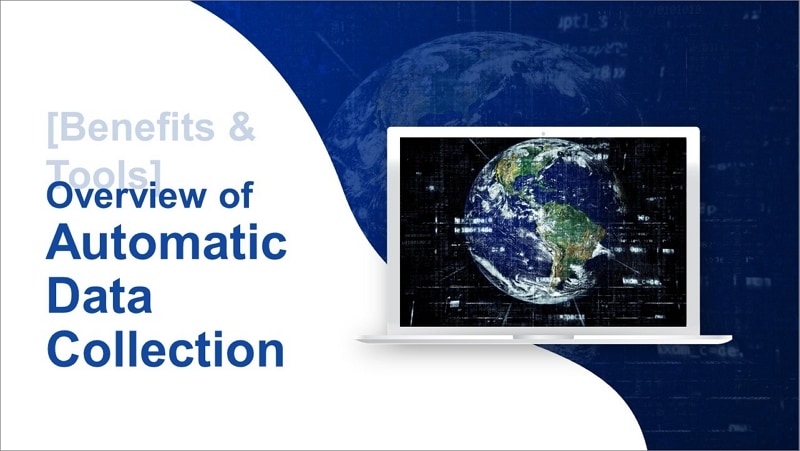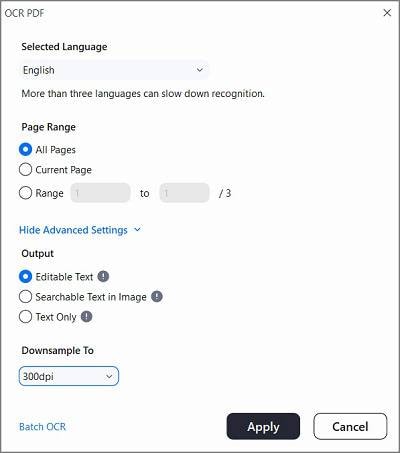In this digital world, we live in, data is the new oil. It would be wise to find ways to collect and interpret information as best as possible if you want your business to stay ahead. However, software and technological gadgets lack the human touch to decipher information the way humans would use their senses.
The best solution to this predicament is to convert paper files to digital data for machine learning. This article will discuss automatic data collection, its benefits, and the best tools you could use to automate data collection.

In this article
What Is Automatic Data Collection?
Automatic data collection is the process whereby a machine or AI programming software reads data within paper files and converts it into an e-file. You can store this e-file in your database or share it with other shareholders.
Before automatic data collection existed, business employees would enter data manually in company record books. Since it is our nature to make mistakes, you can only imagine the number of errors those records contained. Employees would resort to extra preventive measures such as double entry, which most likely took them a couple of extra hours to complete the allocated task.
Benefits of Auto Data Collection on Business
Now that you know what automatic data collection is, let's see how it can benefit you or your business.
Reduced errors
Researchers studied manual data entry methods and discovered that employees are more prone to making errors when visually checking data. Single entry is equally as prone to errors as visual checking. Automatic data collection reduces human error by entering 100% accurate and current data. The fewer errors you make in your company, the less money you waste.
It saves time
Updated records are crucial to the success of any business or establishment. However, entering hundreds of pages manually can be pretty tedious. Automated data collection saves you time and streamlines your workflow by updating your records in a fraction of the time you would have spent performing the task manually.
Improves efficiency
Your employees could spend so many hours doing data entry tasks that they lack time to concentrate on other crucial tasks within the organization. Automated data entry takes the load off their shoulders, freeing them to focus on other functions like customer satisfaction that will propel the organization forward.

It saves you money
Automating data collection helps you save your precious coins on daily business operations because you won’t need to hire an entire department specifically to help you manually enter data. Since automated data collection improves efficiency, your business will also generate more revenue. You can then reinvest the extra money into your business or place it in an emergency fund for a rainy day.
It helps you go paperless
As we build our businesses, it is essential to consider the impact on the environment. Most of the hardcopy files we print will soon end up in a dumpster or a landfill, which is very harmful to the environment. Automatic data collection helps you reduce your carbon footprint and convert paper files into shareable digital documents that don’t require printing. In addition to saving the environment, you save yourself lots of frustration and additional costs that come with keeping paper files and documents organized.
Improved turnaround
You might be wasting lots of time in your business waiting for a document to move from one hierarchy to another and get approved. Imagine a scenario where a manager is swamped with work and has a massive stack of papers on his desk, all requiring perusal, and approval. When you use automated data collection methods, the e-files can easily be scanned and sent to management for quick confirmation.
3 Different Automatic Data Collection Methods
As easy as automated data collection sounds, it is not a one-size-fits-all affair. You are responsible for determining what kind of system will work best for your business or personal needs. Stay tuned to learn the three main methods of automatic data collection you could use.
1. Optical Character Recognition (OCR)
The first ADC collection method on our list is optical character recognition, popularly known as OCR. This process uses technology to read handwritten characters or printed texts within digital documents or images.
For instance, you can use OCR to scan a receipt and convert it into a text document. The contents of the receipt will then be stored as text data. Unfortunately, you cannot use a text editor to count or edit the words within the image file.
The use of OCR is widespread in the healthcare, logistics, and banking industries. Even though the output of OCR requires some level of human reviewing and proofreading, there is no denying that OCR is a cost-effective solution that also saves you precious time. Some key features of OCR include scanning, printing, error correction, proofreading, and recognition capabilities.

2. Optical Mark Recognition(OMR)
Optical mark recognition, also known as optical mark reading, uses technology to decipher and identify specific markings on a document. Examples of areas where OMR is applicable include reading and scanning surveys, questionnaires, and grading examination papers where students indicate the correct answer by shading the appropriate box. A scanner deciphers the markings on the paper by checking how light reflects through the form. The shaded area will allow less light to pass through the paper, leading to a noticeable contrast. Critical features of OMR include designing, scanning, printing, anti-cheat features, generation of reports, and data sorting. Unlike human beings, OMR can work long hours and handle numerous documents without fatigue. OMR is also 99% accurate, which far exceeds what a human can do. If you had to peruse 10,000 questionnaires, we can bet you wouldn’t be as fast or precise as an OMR scanner.
3. Intelligent Character Recognition (ICR)
Lastly, intelligent character recognition is a method of data automation whereby a computer translates handwritten and manually entered text into characters that a machine can read. Some features you can expect with ICR software include reading, detecting, and classification of texts, VMS integration, real-time dashboard, and reporting modules. ICR software is also customizable to fit your unique needs.
However, it would help if you didn’t confuse ICR with OCR. A significant difference is that OCR cannot decipher diverse handwriting styles and unstructured texts. ICR’s enhanced learning process significantly improves OCR by extracting data from complex handwriting styles. In addition, the software will add new characters to the database every time it deciphers unique handwriting.
With all these further improvements, you can be sure that ICR is a highly accurate tool to take your automated data collection to the next level. ICR is suitable for hospitals, law firms, and financial establishments that deal with numerous written forms requiring entry into the company’s database.
Wondershare PDFelement- A Powerful Automatic Data Collection Tool
Having read the benefits of automatic data collection and learned more about the three ADC methods, you might consider incorporating automatic data collection in your establishment. Wondershare PDFelement - PDF Editor is an excellent tool that helps you automatically collect data and reap all the benefits you have discovered above.

This software has an OCR feature that recognizes more than 20 languages and guarantees top-tier quality and accuracy. With Wondershare PDFlement, you can accurately scan your PDFs, files, and images with one click and use precious time to focus on other crucial tasks.
You also don’t have to worry about your documents’ layout and formatting elements, such as page numbering, headers, and footers. Wondershare PDFelement will preserve and reproduce them as they appear, leaving you with a polished digital copy ready for storage or easy sharing with key stakeholders.
In addition, you can synchronize the newly-added and recognized texts from your scanned file with pre-existing fonts to make the editing seamless.
How To Automatically Collect Data With PDFelement
We hope you are excited about trying the OCR feature on Wondershare PDFelement. Here is a detailed guide on how to use this platform for auto data collection.
Step 1 Launch the Wondershare PDFelement platform and open the PDF that you want to perform OCR.
Step 2 Click on OCR at the top of the page.

Step 3 In the pop-up OCR PDF window, indicate the desired parameters before clicking on Apply to initiate the OCR process.

Step 4 Once the process is complete, save your work by clicking on the Save icon.
In addition to OCR feature, Wondershare PDFelement has other functions to perform all PDF tasks. Watch the video below to learn more.
Conclusion
Technology has really made a significant impact on our lives and changed how we do things today. An excellent example is the invention of automatic data collection tools that make our work easier, improve accuracy and boost our efficiency. We can’t imagine how people used to do things in the olden days.
Now that you know more about automatic data collection, various methods, and excellent tools you could use, it is high time you leveraged this technology to boost your chances of being successful. Automated data collection tools could also give you a competitive edge and stand out from your rivals in the industry. However, it would be wise to do ample research and use trial and error methods to find an ADC method that works best for you.


